When you actively participate in an area in which you are “passion-driven,” others notice, and opportunities will open for you. For young people, I suggest
find your passion, volunteer, and get involved.

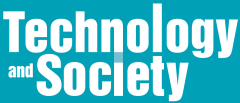

When you actively participate in an area in which you are “passion-driven,” others notice, and opportunities will open for you. For young people, I suggest
find your passion, volunteer, and get involved.
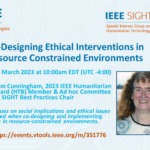
The IEEE Humanitarian Technologies Board Ad Hoc Committee on SIGHT Best Practices is cooperating with a number of IEEE OUs… Read More

Young people’s unique understandings and perspectives are often not considered in debates and discussions around privacy and security. This article outlines a youth-centric notion of digital privacy and guiding principles around privacy developed by young people from Antigua and Barbuda, Australia, Ghana, and Slovenia.

Technology has always been about more than simply a route to increased productivity and economic growth; technology also provides the opportunity to enhance, enrich, and empower—basically, to improve shared qualitative values or people’s quality of life (however that is measured). On the flip side, technology also provides the opportunity to develop and project organizational control, which itself can be weaponized to quantitatively determine human value as an asset to that organization, or to reinforce asymmetric power relationships.

From the social unity of Ubuntu to the socially ingrained dispositions of habitus, our authors helped us to perceive the value of intentionally weaving together threads of history to shape the present and future social fabric of humanity.

Stefan Höhne dives into a wealth of letters—correspondence sent to the New York City Transit Authority in the period 1955–1968.
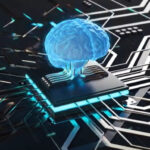
Professor Katina Michael of Arizona State University in the School for the Future of Innovation in Society discusses ChatGPT and its implications. From The List Show TV.
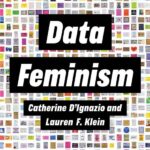
In Data Feminism, authors Catherine D’Ignazio and Lauren F. Klein do not merely deal with data. They pair data with feminism. Here, feminism is deployed as a “shorthand for the diverse and wide-ranging projects that name and challenge sexism and other forces of oppression, as well as those which seek to create more just, equitable, and livable futures.”

Good Pictures is about the advice given to photographers—mostly amateurs—on the techniques they should use to improve their work. Of course, the advice is intimately tied to technological developments in photography as well as the desire of camera makers to sell new products.
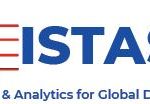
The IEEE International Symposium on Technology and Society (ISTAS) 2023 takes place in Swansea University, Wales from 13 – 15… Read More

We would act wisely if we turn to alternative ways of thinking, other wisdom traditions, and learn from them. Ubuntu philosophy can help to draw attention to social issues, for example, the horrors of colonialism, exclusion, and oppression, and to find ways to promote social justice. Aboriginal wisdom can help to apply diverse ways of knowing, for example, knowledge that is related to place, to kinship, to stories, to patterns—not only knowledge in books. The Indigenous cultures and wisdom of the Americas can teach us how to organize economic and political systems more sustainably and to develop more caring relationships with nature. And Confucian culture and wisdom can help to design and apply technologies in ways that support us as relational and developmental beings.

While it is true that technology is addressing problems and making elements of some people’s lives easier, there are aggregate measures that suggest a troubling trajectory.

This dialogue occurred between Katina Michael and ChatGPT on 2 January 2023 on the topic of mental health and the usefulness of digital mental health apps.
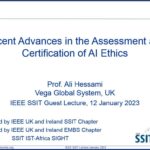
This SSIT Guest Lecture was presented by Prof Ali Hessami, Vega Systems, UK at a Chapter Meeting organised by IEEE… Read More

How can local (grassroots) contributive justice be used as a driving force for the common good?
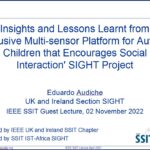
This SSIT Guest Lecture was presented by Eduardo Audiche, IEEE UK and Ireland Section SIGHT at a Chapter Meeting organised… Read More

OCEANS 2023, jointly sponsored by the IEEE Oceanic Engineering Society (IEEE OES) and the Marine Technology Society (MTS), takes place in Limerick,… Read More
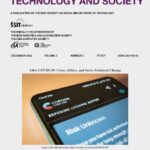
Access Volume 3 Issue 4 Special Issue: After COVID-19: Crises, Ethics and Socio-Technical ChangeSpecial Issue: After COVID-19: Crises, Ethics and… Read More

The IEEE Society on Social Implications of Technology (SSIT) has had many volunteers step into leadership positions for purposefully limited terms over the past half-century. We address the challenges and opportunities of our day and then move on, unlike some world leaders who cannot bear to fade away.
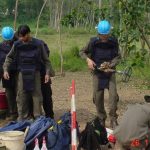
PeaceTech is “the movement to use technology to end violent conflict and extremism.”